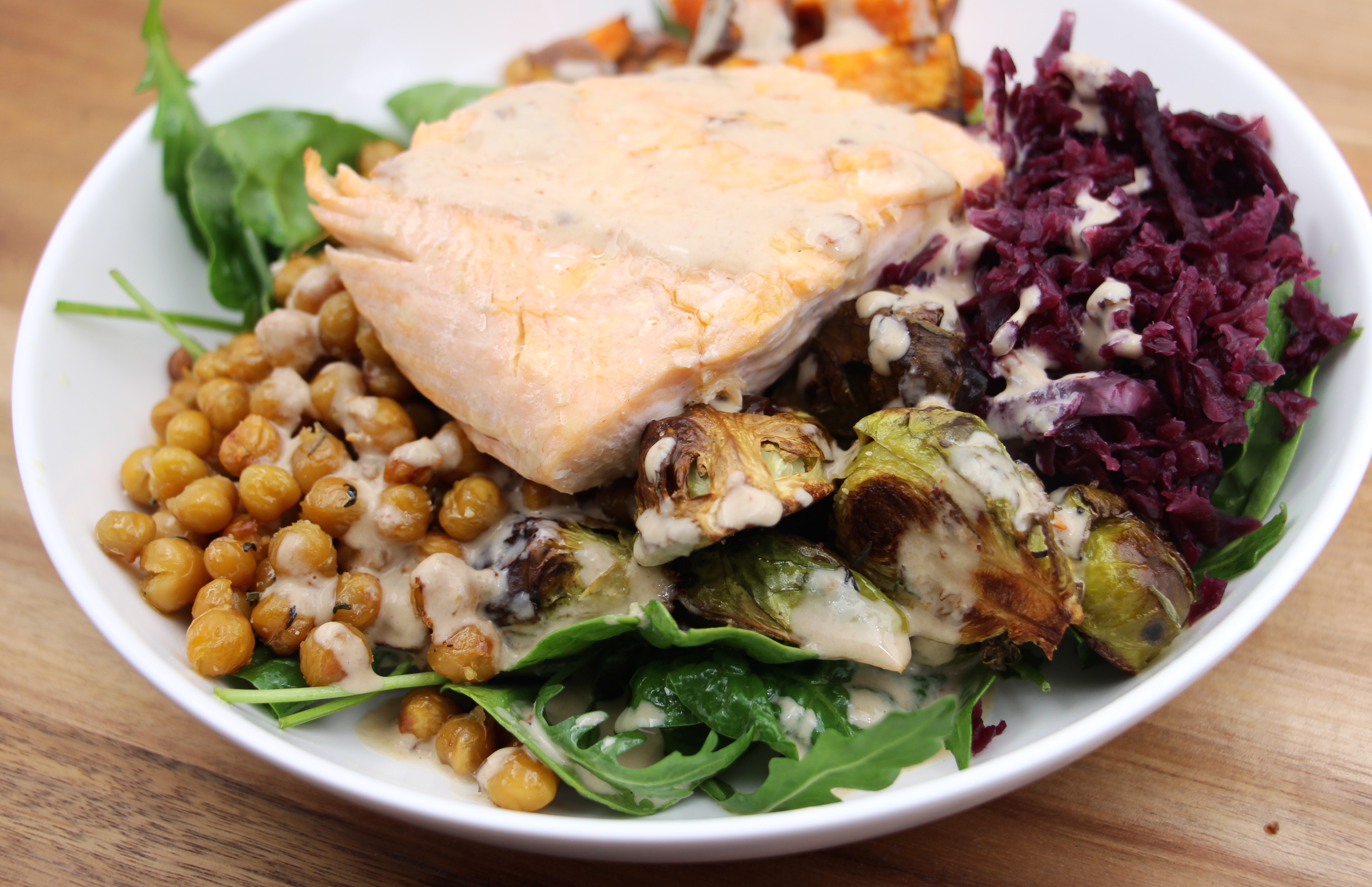I have a rule (that I adhere to on a semi-regular basis) that I won’t order something in a restaurant that I can make just as well at home. This means that I’m generally not ordering things like spaghetti and meatballs, açai bowls, or roast chicken (unless, you know, I really, really want them. It’s a loose rule at best.)
Up until recently, the popular Buddha bowl was a weird glitch in my (otherwise totally airtight) rule: while I should be able to make Buddha bowls at home easily, I never did. It always seemed like too much work: preparing five or six individual ingredients and arranging them just so. Plus, I have a weird yet constant desire to use up pretty much everything in my kitchen in one go, and roasting just one parsnip when I bought a kilo of them from the veggie co-op went against everything I believed in.
Or it did, at least, until I decided to make my own sauerkraut.
I’m not really sure what possessed me to do it. I had a red cabbage hanging around in my kitchen, and in searching online for brassica inspiration, I stumbled upon a beet and cabbage sauerkraut recipe that looked just crazy enough to work. It was Sunday; I was bored. I quickly made up two jars of the stuff and left it on my counter to ferment.
That was over a month ago now. There it sat, making me feel guilty every time I opened the fridge door, until I read Mark Hyman’s new book, Food. First of all, if you’re not already a health food convert, that book pretty much makes you one. But there’s a specific part where he discusses making several vegetable side dishes every evening, and something just clicked. I made my first Buddha bowl that night, and I’ve been hooked ever since.
So far, my Buddha bowls pretty much always start with a base of spinach and arugula – the latter of which, I learned in Food, is actually a member of the cabbage family and infinitely better for you than many other lettuces. Plus, it’s delicious.
To that base, I add a panoply of roasted vegetables, my favorite lemon-tahini dressing, and in the case of this bowl, a a piece of salmon. It’s pretty, and it doesn’t take much more effort than other meals I make. Plus, I love that it defaults me to a single (reasonable) serving, as seconds (and thirds) tend to be my downfall.
I also love how variable Buddha bowls are, especially when I’m cooking for both myself and the Country Boy. He’s not a fan of arugula, which he calls “itchy,” or of sauerkraut, or of lemon. He does, however, love roasted Brussels sprouts and sweet potatoes, so I can give him a bit more of those, and I always have a mustard vinaigrette kicking around in the fridge that he can use in place of the lemony, slightly spicy tahini dressing.
Ever since this first bowl, I’ve been experimenting – so get ready to see a few more of my favorite combos soon.
Salmon and Roasted Vegetable Buddha Bowl (serves 2)
1 16-ounce can chickpeas, drained
1 small sweet potato, diced
about 10 Brussels sprouts, halved or quartered
1 tablespoon olive oil
2 5-ounce pieces salmon fillet
1 teaspoon olive oil
2 tablespoons tahini
juice of half a lemon
1/4 teaspoon garlic powder
1 pinch chili flakes
2 handfuls spinach
2 handfuls arugula
2 heaping tablespoons sauerkraut
salt and pepper, to taste
Preheat the oven to 450 degrees. Arrange the sweet potatoes, chickpeas, and Brussels sprouts in three separate areas of a sheet pan. Drizzle with olive oil, season with salt, and roast for about 15-20 minutes, until golden brown. Remove from the oven and season with pepper.
When the vegetables are cooked, heat the teaspoon oil in a cast-iron pan, season the salmon fillets with salt, and place them face-down in the pan. Cook for about 2-3 minutes, then flip to the skin-side and place in the oven. Bake for an additional 5 minutes, then remove the pan from the oven and set aside.
Whisk together the tahini, lemon juice, garlic powder, and chili flakes. Add a touch of water if needed to thin it out to dressing consistency, and season with salt and pepper.
Assemble the bowls: start with a bed of spinach and arugula, and top with separate mounds of sweet potato, Brussels sprouts, chickpeas, and sauerkraut. Drizzle with the dressing and place the salmon fillet on top.


